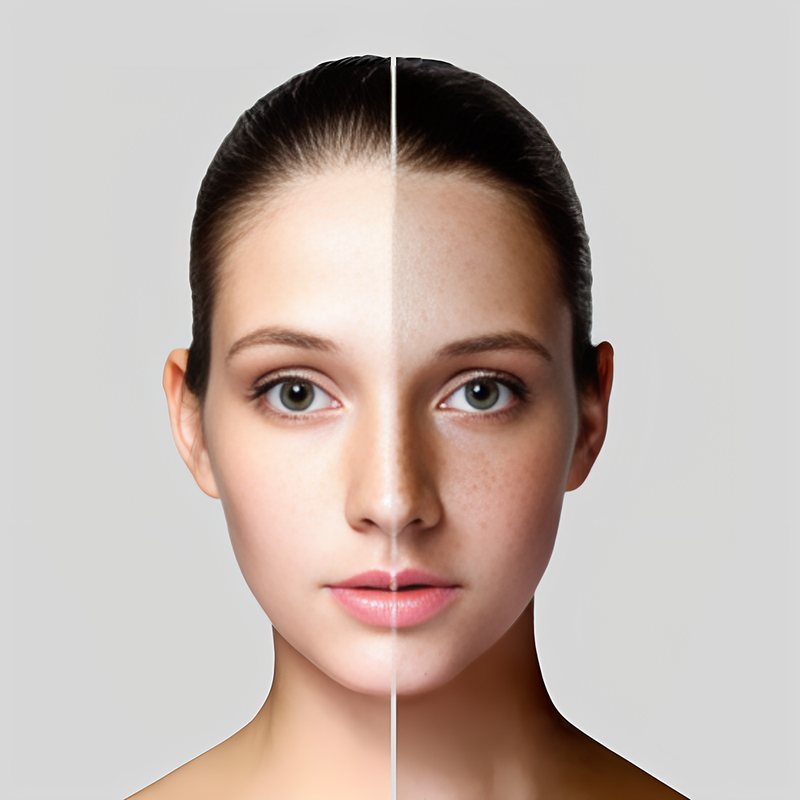Fat Grafting Procedure
Understanding Fat Grafting
Fat grafting is based on a relatively simple concept: fat is harvested from an area of the body where it is plentiful (such as the abdomen, thighs, or buttocks) and then injected into areas where volume is needed or desired (such as the face, breasts, buttocks, or hands). This procedure not only adds volume but also has the potential to improve skin texture and vitality, thanks to the stem cells and growth factors present in adipose tissue.

Fat grafting, also known as fat transfer or lipofilling, is a surgical procedure that involves transferring fat from one part of the body to another. This technique is becoming increasingly popular for both cosmetic and reconstructive purposes.
The appeal of fat grafting lies in its ability to use the patient’s own fat tissue as a natural filler, providing results that can be both aesthetically pleasing and long-lasting. In this blog post, we will delve into the details of the fat grafting procedure, including its benefits, the process itself, and what patients can expect during recovery.


Who needs Fat Grafting?
Fat grafting, also known as autologous fat transfer, is a versatile procedure that caters to a wide range of needs, both cosmetic and reconstructive. It is suitable for individuals looking to enhance or restore volume to certain areas of their body, improve contours, or rejuvenate aging skin. Here are some of the key groups who might consider fat grafting:
1. Cosmetic Enhancement Seekers
- Facial Rejuvenation: Individuals seeking to reduce the appearance of wrinkles, fill in sunken areas, or enhance facial features such as cheeks, lips, and under-eye areas.
- Breast Augmentation: Those desiring a modest increase in breast size or a more natural alternative to breast implants.
- Breast Reconstruction: Women who have undergone mastectomy or have breast deformities and prefer a more natural reconstruction method.
- Buttocks Enhancement: People aiming for a more rounded and voluminous buttock through a procedure known as the Brazilian Butt Lift (BBL).
- Hand Rejuvenation: Individuals looking to reduce the appearance of aging hands by adding volume and improving skin quality.
2. Patients with Soft Tissue Deficiencies
- Congenital Anomalies: Patients with congenital conditions that result in asymmetry or lack of volume in certain body areas, such as Poland syndrome or congenital breast asymmetry.
- Traumatic Injuries: Individuals who have experienced trauma leading to soft tissue loss or deformities that can be corrected or improved through fat grafting.
- Post-Surgical Reconstruction: Those requiring reconstruction after surgeries such as tumor removal or other procedures that result in loss of volume or deformities.
3. Aging Individuals
- Age-Related Volume Loss: As people age, they may experience volume loss in the face, hands, and other body parts. Fat grafting can help restore this lost volume, leading to a more youthful appearance.
4. Individuals Seeking Body Contouring
- Body Contour Irregularities: People with body contour irregularities, either from liposuction or other causes, may benefit from fat grafting to smooth out these areas and create a more even, natural appearance.
Fat Grafting Procedure
| Step | Description |
|---|---|
| Consultation and Planning | Meeting with a surgeon to discuss goals and assess suitability for the procedure. |
| Anesthesia | Application of local or general anesthesia depending on the extent of the procedure. |
| Harvesting | Liposuction process to remove fat from donor sites such as the abdomen or thighs. |
| Processing | Purification and preparation of the extracted fat for transfer. |
| Injection | Careful injection of the processed fat into the target areas for enhancement. |
| Recovery | Initial healing process, including possible swelling and bruising, and gradual improvement of treated areas. |
1. Consultation: The first step is a consultation with a qualified plastic surgeon to discuss goals, evaluate the areas to be treated, and determine if fat grafting is the best option.
2. Harvesting: The procedure begins with the collection of fat, typically using liposuction techniques. The area from which fat is taken is anesthetized, and small incisions are made to insert a cannula for fat removal.
3. Processing: Once the fat is harvested, it is processed and purified. This may involve centrifugation or filtration to separate viable fat cells from the liquid components.
4. Injection: The prepared fat is then carefully injected into the target areas. This step requires precision and artistry to achieve a natural-looking, uniform enhancement.
Recovery and Results
Recovery from fat grafting varies depending on the extent of the procedure and the individual’s healing process. Swelling and bruising are common but gradually subside over the first few weeks. Most patients can return to normal activities within a week, though strenuous exercise should be avoided for a bit longer.
The final results may take a few months to fully materialize, as some of the transferred fat is naturally absorbed by the body. The surgeon might overfill the treated areas initially, anticipating this absorption. Once stabilized, the results can last for many years, with the transferred fat behaving like any other fat in the body.

















Benefits
Achieving Stunning Results with Fat Grafting
Fat grafting, also known as autologous fat transfer, has emerged as a popular and versatile procedure in both cosmetic and reconstructive surgery. Its benefits extend beyond simple volume enhancement, offering a range of advantages to patients seeking a more natural approach to body sculpting and rejuvenation. Here are six key benefits of fat grafting:
Fat grafting uses the patient’s own fat cells to enhance or augment body areas, leading to results that look and feel natural. Unlike synthetic fillers or implants, the texture and contour achieved with fat transfer closely mimic the body’s own tissues, providing a seamless integration.
The procedure offers a dual benefit: it removes excess fat from areas where it’s unwanted (such as the abdomen, thighs, or flanks) via liposuction, and then uses that fat to enhance other areas. This allows for body contouring and sculpting in both the donor and recipient sites, achieving a more balanced and proportionate physique.
Since the filler material is the patient’s own body fat, the risk of allergic reactions or rejection is significantly reduced compared to synthetic fillers or implants. This biocompatibility makes fat grafting a safer choice for many patients.
While some of the transferred fat may not survive the transfer process, a significant portion does, leading to results that can last for many years. Unlike temporary fillers that require regular upkeep, fat grafting offers a more durable solution to volume loss and contour deficiencies.
Fat grafting has been observed to improve the quality of the skin over the areas where it is injected. The stem cells and growth factors present in adipose tissue can help rejuvenate the skin, improving its texture and appearance, and in some cases, even ameliorating scars.
Fat grafting can be used in a wide range of applications, from facial rejuvenation to correct deep wrinkles and sunken areas, to breast augmentation for a modest increase in size or to correct asymmetries, and for buttock augmentation for a more rounded and enhanced appearance. It’s also used in reconstructive surgery to correct anomalies or defects resulting from injury, surgery, or congenital conditions.
About Specialist
Dr. Pramod Hari Mahajan
Dr. Pramod Hari Mahajan is a highly esteemed Laser and Cosmetic Surgeon in North Maharashtra. With certification from the Australian Board and over 40 years of experience.
He is a skilled practitioner of advanced cosmetic and laser procedures. As a former Professor of Surgery at M. H. Medical College, Nashik. Dr. Mahajan brings a wealth of knowledge and expertise to his practice, ensuring the highest quality of care for his patients.

"I had dark circles under my eyes for years and tried everything, but nothing worked until I tried laser treatment at this clinic. The results were amazing, and my skin around my eyes looks much smoother and younger. The staff were professional and friendly, and the treatment was painless and quick. I highly recommend this clinic for anyone struggling with dark circles."

"I am so happy with the anti-aging treatment I received at this clinic. The staff were knowledgeable and friendly, and they helped me design a customized treatment plan that addressed my specific concerns. After just a few sessions, I noticed a significant improvement in the texture and tone of my skin, and I feel much more confident and youthful."

"I struggled with acne and acne scars for years and was feeling hopeless until I tried laser treatment at this clinic. The results were truly remarkable, and my skin has never looked better. The staff were professional and knowledgeable, and they made me feel comfortable throughout the entire process. I highly recommend this clinic to anyone struggling with acne or acne scars."

"I had always been self-conscious about my appearance, but after visiting this clinic for cosmetic and laser surgery, I feel like a new person. The staff were friendly and supportive, and they helped me choose the right procedures to achieve my desired results. The surgery itself was quick and painless, and the results exceeded my expectations. I am so grateful to this clinic for giving me the confidence I always wanted."

"I had been struggling with melasma and uneven skin tone for years and was feeling hopeless until I tried laser treatment at this clinic. The staff were knowledgeable and professional, and they helped me design a customized treatment plan that targeted my specific concerns. After just a few sessions, I noticed a significant improvement in the fairness and clarity of my skin. I highly recommend this clinic to anyone struggling with melasma or uneven skin tone."
ExcellentBased on 416 reviews
 Rohini Korde2023-12-30Nice result
Rohini Korde2023-12-30Nice result Maya Mali2023-12-29nice result
Maya Mali2023-12-29nice result VIDYA KHAIRNAR GP Khedgaon (SONI)2023-12-28Good results ,very nice
VIDYA KHAIRNAR GP Khedgaon (SONI)2023-12-28Good results ,very nice harshal bodavde2023-12-20Best result 👍💯
harshal bodavde2023-12-20Best result 👍💯 Swash Empire2023-12-11There Lasers are very effective on facial treatment
Swash Empire2023-12-11There Lasers are very effective on facial treatment Shalini Nandurdikar2023-12-06Best Hi - tech Laser treatment. Amezing results .Most recomended
Shalini Nandurdikar2023-12-06Best Hi - tech Laser treatment. Amezing results .Most recomended User2023-11-30Good
User2023-11-30Good Sagar Thakare2023-11-27Nice result
Sagar Thakare2023-11-27Nice result Swati Nehate2023-11-27Best center in Nashik I took anti aging treatment of Hi -Tech laser.I my skin look young and melasma also controlled Thanks to sir.
Swati Nehate2023-11-27Best center in Nashik I took anti aging treatment of Hi -Tech laser.I my skin look young and melasma also controlled Thanks to sir.
Special Offer
Book Your Appointment With Our Experts
Everything you need to feel healthy and beautiful
FAQ
Fat Grafting Procedure
FAQs about laser tattoo removal cover pain management, session frequency, potential side effects, ink color challenges, suitability for different skin types, and the number of sessions needed for complete removal.
Answer: Fat grafting, also known as autologous fat transfer, is a surgical procedure that involves harvesting fat from one part of the body where it is in excess (like the abdomen, thighs, or buttocks) using liposuction, processing that fat, and then injecting it into another area that needs augmentation or correction. This technique is used for both cosmetic and reconstructive purposes, such as facial rejuvenation, breast augmentation, buttock enhancement, and correcting irregularities.
Answer: The longevity of fat grafting results can vary from person to person. While some of the transferred fat may be reabsorbed by the body within the first few months, the fat that remains after this initial period is likely to be permanent. However, it's important to note that the longevity of results can also be influenced by factors such as the technique used, the area treated, and the patient's lifestyle, age, and skin quality.
Answer: Fat grafting is generally considered safe, especially since it uses the patient's own fat, which minimizes the risk of allergic reactions or rejection. However, like any surgical procedure, there are risks involved, including infection, bleeding, and irregularities in contour. Choosing a board-certified plastic surgeon with experience in fat grafting can help minimize these risks.
Answer: Recovery time after fat grafting can vary depending on the extent of the procedure and the individual's healing process. Generally, patients can expect some swelling and bruising at both the donor and recipient sites, which typically subsides within a few weeks. Most patients are able to return to normal activities within a week, although strenuous exercise should be avoided for a period recommended by the surgeon.
Answer: Yes, fat grafting can be used for breast augmentation. It is an option for women looking for a modest increase in breast size or for those seeking a more natural alternative to implants. Fat grafting can also be used to improve breast shape, correct asymmetries, and enhance the results of breast reconstruction.
Answer: The donor site for fat grafting is chosen based on where there is sufficient excess fat to harvest. Common donor sites include the abdomen, thighs, and buttocks. The choice of donor site will also depend on the patient's body type, preferences, and the surgeon's assessment of which areas will provide the best quality fat for transfer. The goal is to choose a site that not only offers enough fat but will also benefit from liposuction for a more contoured outcome.
Answer: Fat grafting typically results in minimal scarring because the procedure involves small incisions for both the fat harvesting (liposuction) and injection phases. These incisions are usually only a few millimeters in length and are placed in discreet locations to minimize visible scarring. Over time, these small scars can fade significantly, but the degree of scarring varies from person to person based on individual healing characteristics.
Fat grafting is generally considered to be permanent, and reversing the procedure can be challenging. However, if necessary, options to modify the results include liposuction to remove excess fat from the area where it was injected or additional fat grafting to correct or enhance the initial results. It's important to discuss expectations and potential outcomes with a qualified plastic surgeon to achieve the desired results.
The cost of fat grafting can vary widely depending on the area being treated, the volume of fat being transferred, the complexity of the procedure, and geographic location. Costs can also be affected by the surgeon's experience and the facility where the procedure is performed. It's important to consult with a plastic surgeon for a personalized quote that includes all associated fees, such as anesthesia, facility costs, and follow-up care.
Patients typically experience some discomfort and swelling after fat grafting, but pain is generally manageable with prescribed or over-the-counter pain medications. The level of discomfort can vary depending on the extent of the procedure and individual pain tolerance. Most patients report that the discomfort subsides significantly within the first week after the procedure.
Answer: Yes, in addition to adding volume, fat grafting can improve the texture and appearance of the skin. The fat injected contains stem cells and growth factors that can help rejuvenate the skin, improving its texture, elasticity, and overall appearance. This regenerative effect is one of the unique advantages of fat grafting compared to synthetic fillers.
Answer: An ideal candidate for fat grafting is someone in good health, with realistic expectations, and has sufficient fat deposits for harvesting. Ideal candidates are looking for volume enhancement or correction in specific areas but do not desire or are not suitable for synthetic implants. Patients should also be at a stable weight, as significant weight fluctuations can affect the results of the fat transfer. A consultation with a board-certified plastic surgeon is the best way to determine if fat grafting is a suitable option.
Special Offer
Get Free Consultation With Our Experts
Everything you need to feel healthy and beautiful
Get In Touch
Reach out to our sest skin specialist today to ensure your skin stays Healthy and Glowing.










